Wenming Tang
Quarter Laplacian Filter for Edge Aware Image Processing
Jan 20, 2021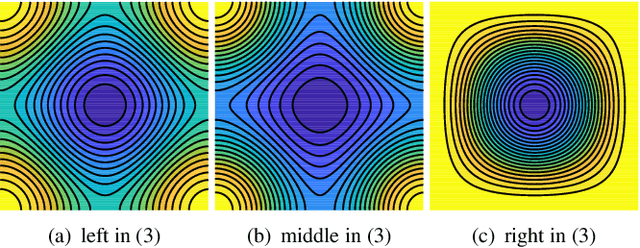
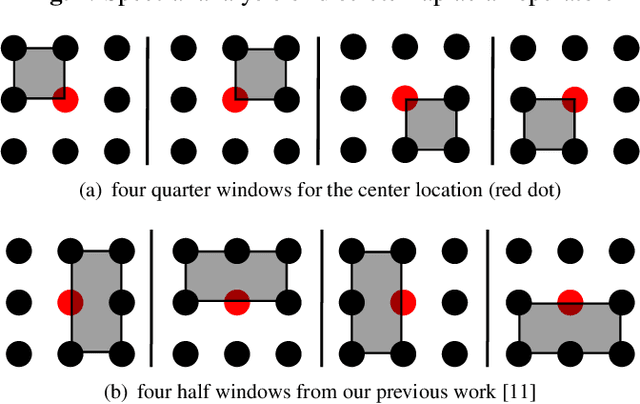
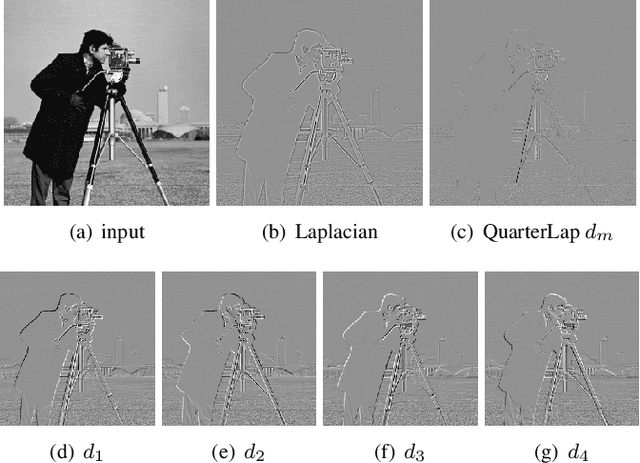
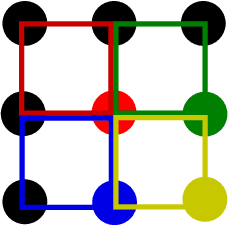
Abstract:This paper presents a quarter Laplacian filter that can preserve corners and edges during image smoothing. Its support region is $2\times2$, which is smaller than the $3\times3$ support region of Laplacian filter. Thus, it is more local. Moreover, this filter can be implemented via the classical box filter, leading to high performance for real time applications. Finally, we show its edge preserving property in several image processing tasks, including image smoothing, texture enhancement, and low-light image enhancement. The proposed filter can be adopted in a wide range of image processing applications.
A Discrete Scheme for Computing Image's Weighted Gaussian Curvature
Jan 20, 2021
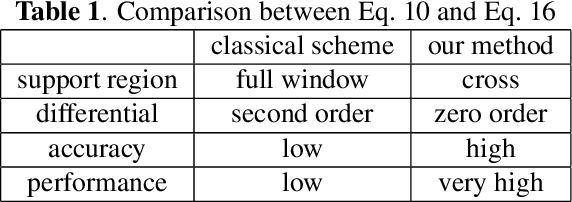


Abstract:Weighted Gaussian Curvature is an important measurement for images. However, its conventional computation scheme has low performance, low accuracy and requires that the input image must be second order differentiable. To tackle these three issues, we propose a novel discrete computation scheme for the weighted Gaussian curvature. Our scheme does not require the second order differentiability. Moreover, our scheme is more accurate, has smaller support region and computationally more efficient than the conventional schemes. Therefore, our scheme holds promise for a large range of applications where the weighted Gaussian curvature is needed, for example, image smoothing, cartoon texture decomposition, optical flow estimation, etc.
MiniNet: An extremely lightweight convolutional neural network for real-time unsupervised monocular depth estimation
Jun 27, 2020



Abstract:Predicting depth from a single image is an attractive research topic since it provides one more dimension of information to enable machines to better perceive the world. Recently, deep learning has emerged as an effective approach to monocular depth estimation. As obtaining labeled data is costly, there is a recent trend to move from supervised learning to unsupervised learning to obtain monocular depth. However, most unsupervised learning methods capable of achieving high depth prediction accuracy will require a deep network architecture which will be too heavy and complex to run on embedded devices with limited storage and memory spaces. To address this issue, we propose a new powerful network with a recurrent module to achieve the capability of a deep network while at the same time maintaining an extremely lightweight size for real-time high performance unsupervised monocular depth prediction from video sequences. Besides, a novel efficient upsample block is proposed to fuse the features from the associated encoder layer and recover the spatial size of features with the small number of model parameters. We validate the effectiveness of our approach via extensive experiments on the KITTI dataset. Our new model can run at a speed of about 110 frames per second (fps) on a single GPU, 37 fps on a single CPU, and 2 fps on a Raspberry Pi 3. Moreover, it achieves higher depth accuracy with nearly 33 times fewer model parameters than state-of-the-art models. To the best of our knowledge, this work is the first extremely lightweight neural network trained on monocular video sequences for real-time unsupervised monocular depth estimation, which opens up the possibility of implementing deep learning-based real-time unsupervised monocular depth prediction on low-cost embedded devices.
Spectral Regularization for Combating Mode Collapse in GANs
Sep 02, 2019



Abstract:Despite excellent progress in recent years, mode collapse remains a major unsolved problem in generative adversarial networks (GANs).In this paper, we present spectral regularization for GANs (SR-GANs), a new and robust method for combating the mode collapse problem in GANs. Theoretical analysis shows that the optimal solution to the discriminator has a strong relationship to the spectral distributions of the weight matrix.Therefore, we monitor the spectral distribution in the discriminator of spectral normalized GANs (SN-GANs), and discover a phenomenon which we refer to as spectral collapse, where a large number of singular values of the weight matrices drop dramatically when mode collapse occurs. We show that there are strong evidence linking mode collapse to spectral collapse; and based on this link, we set out to tackle spectral collapse as a surrogate of mode collapse. We have developed a spectral regularization method where we compensate the spectral distributions of the weight matrices to prevent them from collapsing, which in turn successfully prevents mode collapse in GANs. We provide theoretical explanations for why SR-GANs are more stable and can provide better performances than SN-GANs. We also present extensive experimental results and analysis to show that SR-GANs not only always outperform SN-GANs but also always succeed in combating mode collapse where SN-GANs fail. The code is available at https://github.com/max-liu-112/SRGANs-Spectral-Regularization-GANs-.
 Add to Chrome
Add to Chrome Add to Firefox
Add to Firefox Add to Edge
Add to Edge